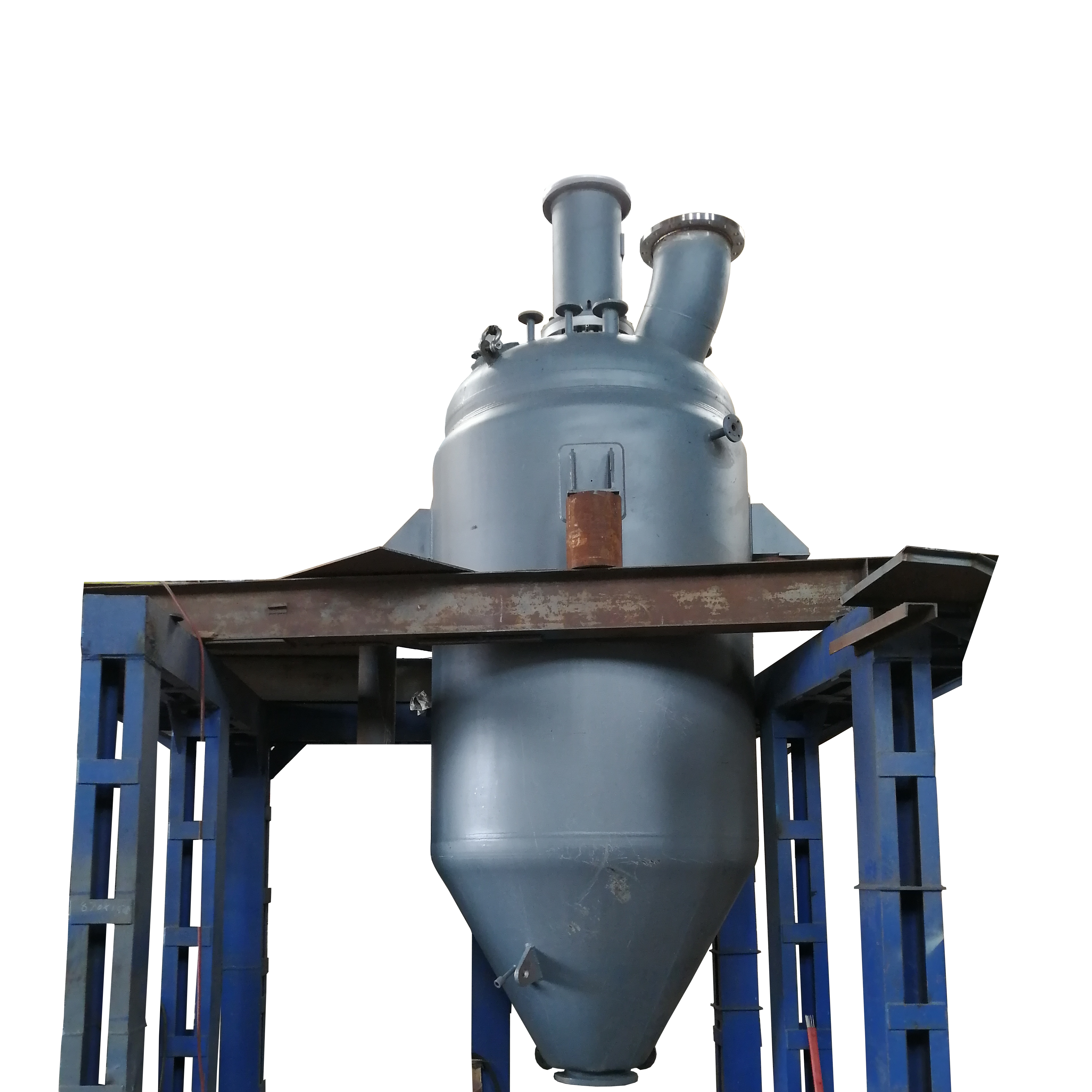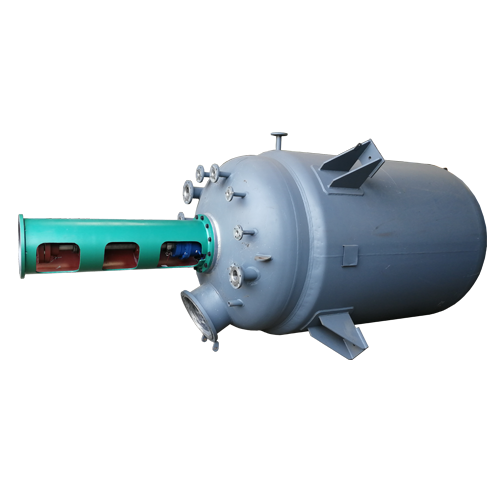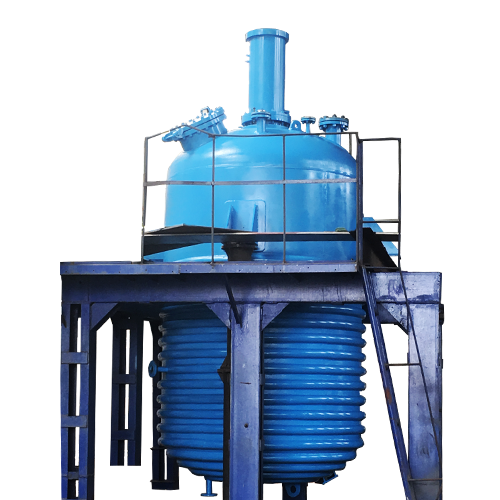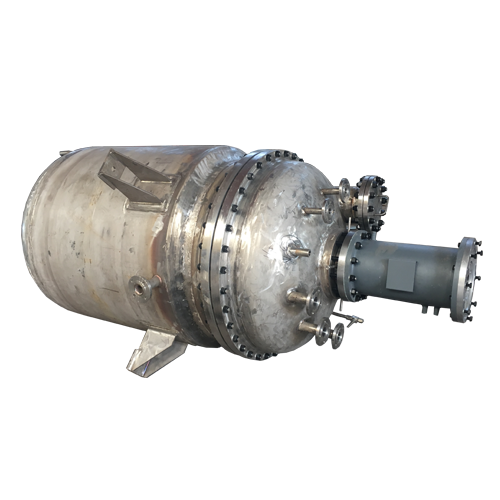Product Center
Your Current Location:Home > Product CenterPolymerization is the process of converting low-molecular-weight monomers into high-molecular-weight polymers. Polymers have important properties such as plasticity, fiber formation, film formation, and high elasticity that low-molecular-weight monomers do not have. They can be widely used as plastics. , Fibers, rubber, coatings, adhesives and other high-molecular materials. This material is composed of more than one structural unit (monomer), a polymer compound synthesized by repeated reactions of monomers.
The polymerization reactor is generally equipped with condensation collection or condensation reflux device, which is conducive to the synthesis of high molecular polymers. High-molecular organic polymers are generally high-viscosity materials, and the bottom of the reactor can be made into a cone according to customer requirements to facilitate discharge and cleaning. The reactor agitator is generally made of a ribbon type or an anchor frame type, with a high-power stirring motor, to achieve the full mixing of the materials in the kettle.
Mechanical seal (mechanical seal) refers to at least a pair of end faces perpendicular to the axis of rotation under the action of fluid pressure and the elastic force (or magnetic force) of the compensation mechanism and the auxiliary seal to keep fit and slide relative to prevent fluid leakage. Device. The main components include moving ring, static ring, sealing ring, cooling device and compression spring.
The mechanical seal has a large rotating torque, suitable for stirring high viscosity media, and its cost is relatively economical. However, the pressure resistance of mechanical seals is not as good as that of magnetic seals, and can withstand up to 1.6MPa pressure. When used in high temperature conditions, the mechanical seal needs to be equipped with a cooling water jacket for cooling.
The semi-circular coil jacket is an efficient heat transfer element. Compared with other forms of jacket, the heat transfer efficiency is high; compared with the inner coil, there is no risk of mixing with the medium in the tank after the leakage of the coil, so it is often used in occasions where the purity of the medium is relatively high.
Semi-circular coils are limited to use seamless tubes with outer diameters of 60, 89, 114mm, suitable for vessels with a diameter of 760~4300mm, and a cylinder or head thickness of 4.5~50mm.
When the semicircular coil jacket is arranged on the shell, its pitch can be determined according to the needs of the heat transfer process and the welding process, and has nothing to do with the strength and rigidity of the shell. Therefore, the semicircular coil jacket does not need to calculate the external pressure, and it has a certain strengthening support for the kettle body.
Stainless steel is often divided into martensitic steel, ferritic steel, austenitic steel, austenitic-ferritic (duplex) stainless steel and precipitation hardening stainless steel according to the state of organization. In addition, it can be divided into: chromium stainless steel, chromium nickel stainless steel and chromium manganese nitrogen stainless steel.
The body, cover and contact materials in the stainless steel reactor are mainly made of 0Cr18Ni9 (S30408), 00Cr17Ni14Mo2 (S31603), 0Cr18Ni10Ti (S32168), or 2205, 2507 and other materials.
Stainless steel has good corrosion resistance and can withstand a variety of acids, alkalis and organic media. The inner and outer surfaces can be pickled and passivated according to the needs of customers to form an oxide film and strengthen the anti-corrosion function. For the inner surface of the kettle with polishing requirements, it can reach the level of mirror polishing.
Hastelloy is a nickel-based corrosion-resistant alloy, mainly divided into two categories: nickel-chromium alloy and nickel-chromium-molybdenum alloy. Hastelloy has good corrosion resistance and thermal stability. Hastelloy plates are suitable for various chemical industries containing oxidizing and reducing media. The higher content of molybdenum and chromium makes the alloy resistant to chloride ion corrosion, and the tungsten element further improves the corrosion resistance. At the same time, C-276 Hastelloy tube is one of the only materials that are resistant to corrosion by moist chlorine, hypochlorite and chlorine dioxide solutions. It is effective for high-concentration chloride solutions such as ferric chloride and copper chloride. Significant corrosion resistance.
The commonly used Hastelloy grades for the reactor are HASTELLOY B2 and HASTELLOY C276. The price of Hastelloy alloy materials is relatively high. In order to save costs, pressure vessels often use explosive composite plates of Hastelloy liner and carbon steel or stainless steel substrate. The substrate meets the requirements for strength and the liner meets the requirements for corrosion resistance.
Heavy non-ferrous metal materials composed of nickel-based and other alloying elements are nickel-based alloys. The grade of nickel used in the reactor is N6. Commonly used nickel-based alloy materials are Monel (MONEL400), Inconel (INCONEL600, INCONEL625), Hastelloy (HASTELLOY C276, HASTELLOY B2), etc.
Nickel-based materials are better than stainless steel in high temperature resistance, high pressure resistance and corrosion resistance, so they are more suitable for harsh reaction media and reaction conditions.
The cost of nickel-based and nickel-based materials is relatively high. Therefore, the explosive composite plate of nickel-based and nickel-based alloy liner and stainless steel or carbon steel substrate is commonly used in industrial production of pressure vessels. The substrate meets the requirements of strength and the liner meets the requirements of corrosion resistance.







